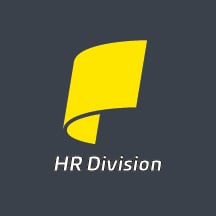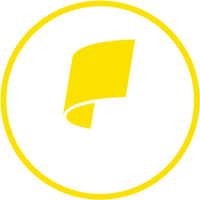As remote work gains popularity, more businesses are adopting hybrid work models. Here's what employers need to know.
What is Hybrid Work?
Hybrid work models combine working in the office and remotely, giving employees the flexibility to choose where and when they work. According to a Gallup poll, 52% of employees who can work remotely reported working in a hybrid model. This shift in how we work acknowledges that work is no longer tied to a specific location and can be completed effectively from various locations.
Benefits of Offering Hybrid Work Options
Reduced Costs. Employers that allow employees to work remotely can save money on office space, utilities, and other expenses.
 Access to a Wider Talent Pool. Offering a hybrid work option is an attractive benefit that opens the doors to a broader talent pool. According to Gallup, job openings may receive as many as two to three times more applicants for certain jobs that allow hybrid or remote options.
Access to a Wider Talent Pool. Offering a hybrid work option is an attractive benefit that opens the doors to a broader talent pool. According to Gallup, job openings may receive as many as two to three times more applicants for certain jobs that allow hybrid or remote options.
Stronger Retention Results. Numerous studies have shown that many workers prefer flexible work options over pay. A quarter of employees surveyed said they would be willing to give up as much as 15% of their annual salary in exchange for flexible work arrangements.
A Gallup study found that three out of 10 hybrid workers are highly likely to quit their jobs if they are not given some degree of remote flexibility, while the same applies to six out of 10 fully remote workers.
 Improved Productivity. Based on recent research by Boston Consulting Group and Scoop Technologies Inc., employers who offer remote-first or hybrid work environments experience four times faster revenue growth than those who require office attendance. Another study found that firms allowing employees to choose when to come to the office and offering remote work saw an increase in sales by 21% between 2020 and 2022. These growth rates are due to the companies' ability to hire from a wider geographic area and retain employees.
Improved Productivity. Based on recent research by Boston Consulting Group and Scoop Technologies Inc., employers who offer remote-first or hybrid work environments experience four times faster revenue growth than those who require office attendance. Another study found that firms allowing employees to choose when to come to the office and offering remote work saw an increase in sales by 21% between 2020 and 2022. These growth rates are due to the companies' ability to hire from a wider geographic area and retain employees.
Stronger Employee Satisfaction. Flexible work options give employees more freedom to build their schedules around their personal lives, resulting in higher job satisfaction and overall well-being.
➡️➡️Read More: 6 HR Trends to Watch
Steps to Navigating Hybrid Work
Establish Hybrid Work Policies. Employers and employees are not always on the same page when determining the division of days between working in-office and remotely. Studies show that most employees (more than half) work in the office three days a week, while less than a quarter work two or four days. Employers should establish clear policies, schedules, and definitions of hybrid work.
 Redefine the Manager's Role. Employees and employers have found a middle ground in hybrid work that works well when managed effectively. The same Gallup study revealed that management style had four times more of an impact on employee engagement and well-being than the physical location of work. Shifting to hybrid work requires employers to take a fresh look at the roles and responsibilities of their management team.
Redefine the Manager's Role. Employees and employers have found a middle ground in hybrid work that works well when managed effectively. The same Gallup study revealed that management style had four times more of an impact on employee engagement and well-being than the physical location of work. Shifting to hybrid work requires employers to take a fresh look at the roles and responsibilities of their management team.
Prioritize Multistate Compliance. When employees work remotely from different states, employers need to be aware of their obligations to register, pay taxes, and comply with local laws. Employers need to educate their employees on the importance of reporting their relocation and updating their addresses so that they can take necessary actions such as state registrations, tax payments, and compliance with other requirements.
 Rethink Workspaces. As the hybrid work model continues to gain traction, traditional office spaces are transforming. The emphasis moves from providing a fixed workspace for every employee to creating new collaborative environments. Rethink the office space as hubs for innovation, teamwork, and social interaction rather than mere spaces for routine tasks.
Rethink Workspaces. As the hybrid work model continues to gain traction, traditional office spaces are transforming. The emphasis moves from providing a fixed workspace for every employee to creating new collaborative environments. Rethink the office space as hubs for innovation, teamwork, and social interaction rather than mere spaces for routine tasks.
Leverage Technology. Invest in stronger security infrastructures, project management software, and other tools and systems so that employees can work remotely and collaborate regardless of location.
➡️➡️ Read More: How to Be Survey Savvy
Focus on Communication and Engagement. According to a Harris Poll, poor communication can cost employers up to $12,506 per worker annually. Building a connected workplace means developing stronger strategies related to communication and collaboration among team members.
Embracing the Future Work
How we work is constantly changing. Striking the right balance between remote and in-office work requires thoughtful planning, effective leadership, and a commitment to creating a united and inclusive workplace culture. To succeed, employers must remain agile, continuously adapting to their workforce's evolving needs.
 About Propel HR. Propel HR is an IRS-certified PEO that has been a leading provider of human resources and payroll solutions for more than 25 years. Propel partners with small to midsized businesses to manage payroll, employee benefits, compliance and risks, and other HR functions in a way that maximizes efficiency and reduces costs. Visit our new website at www.propelhr.com
About Propel HR. Propel HR is an IRS-certified PEO that has been a leading provider of human resources and payroll solutions for more than 25 years. Propel partners with small to midsized businesses to manage payroll, employee benefits, compliance and risks, and other HR functions in a way that maximizes efficiency and reduces costs. Visit our new website at www.propelhr.com









